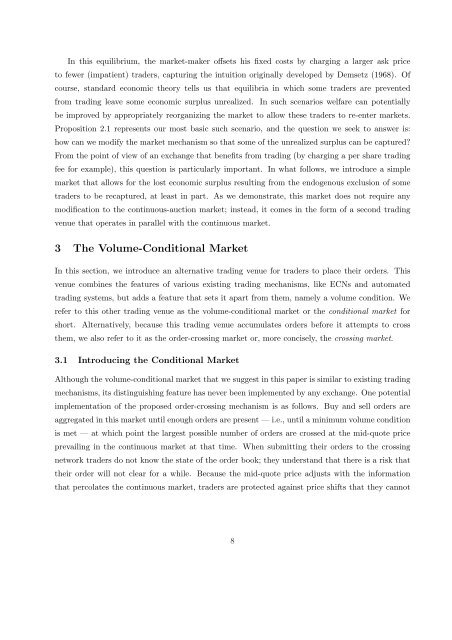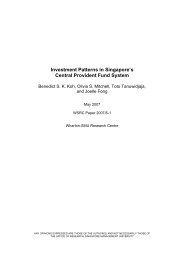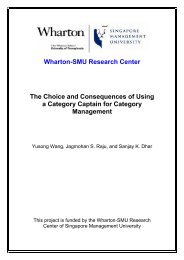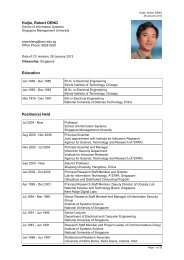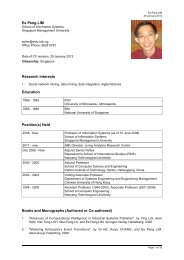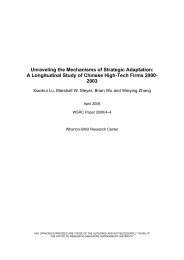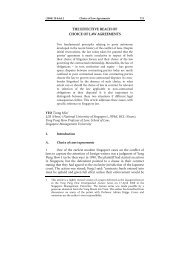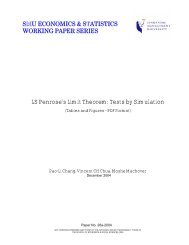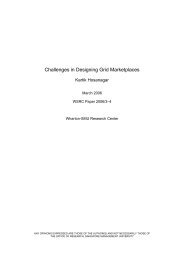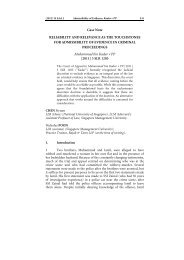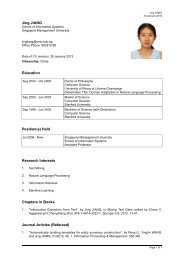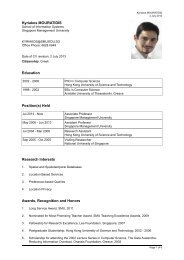The Benefits of Volume-Conditional Order-Crossing - Singapore ...
The Benefits of Volume-Conditional Order-Crossing - Singapore ...
The Benefits of Volume-Conditional Order-Crossing - Singapore ...
Create successful ePaper yourself
Turn your PDF publications into a flip-book with our unique Google optimized e-Paper software.
In this equilibrium, the market-maker <strong>of</strong>fsets his fixed costs by charging a larger ask price<br />
to fewer (impatient) traders, capturing the intuition originally developed by Demsetz (1968). Of<br />
course, standard economic theory tells us that equilibria in which some traders are prevented<br />
from trading leave some economic surplus unrealized. In such scenarios welfare can potentially<br />
be improved by appropriately reorganizing the market to allow these traders to re-enter markets.<br />
Proposition 2.1 represents our most basic such scenario, and the question we seek to answer is:<br />
how can we modify the market mechanism so that some <strong>of</strong> the unrealized surplus can be captured?<br />
From the point <strong>of</strong> view <strong>of</strong> an exchange that benefits from trading (by charging a per share trading<br />
fee for example), this question is particularly important. In what follows, we introduce a simple<br />
market that allows for the lost economic surplus resulting from the endogenous exclusion <strong>of</strong> some<br />
traders to be recaptured, at least in part. As we demonstrate, this market does not require any<br />
modification to the continuous-auction market; instead, it comes in the form <strong>of</strong> a second trading<br />
venue that operates in parallel with the continuous market.<br />
3 <strong>The</strong> <strong>Volume</strong>-<strong>Conditional</strong> Market<br />
In this section, we introduce an alternative trading venue for traders to place their orders. This<br />
venue combines the features <strong>of</strong> various existing trading mechanisms, like ECNs and automated<br />
trading systems, but adds a feature that sets it apart from them, namely a volume condition. We<br />
refer to this other trading venue as the volume-conditional market or the conditional market for<br />
short. Alternatively, because this trading venue accumulates orders before it attempts to cross<br />
them, we also refer to it as the order-crossing market or, more concisely, the crossing market.<br />
3.1 Introducing the <strong>Conditional</strong> Market<br />
Although the volume-conditional market that we suggest in this paper is similar to existing trading<br />
mechanisms, its distinguishing feature has never been implemented by any exchange. One potential<br />
implementation <strong>of</strong> the proposed order-crossing mechanism is as follows. Buy and sell orders are<br />
aggregated in this market until enough orders are present — i.e., until a minimum volume condition<br />
is met — at which point the largest possible number <strong>of</strong> orders are crossed at the mid-quote price<br />
prevailing in the continuous market at that time. When submitting their orders to the crossing<br />
network traders do not know the state <strong>of</strong> the order book; they understand that there is a risk that<br />
their order will not clear for a while. Because the mid-quote price adjusts with the information<br />
that percolates the continuous market, traders are protected against price shifts that they cannot<br />
8


